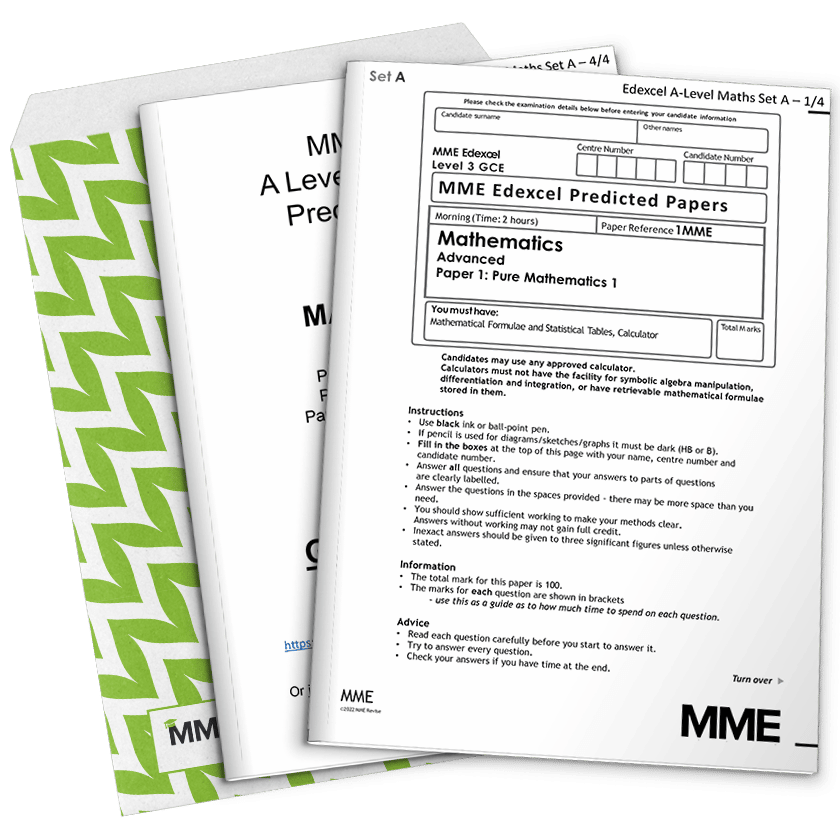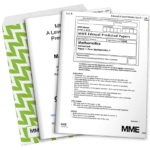Polynomials
Polynomials Revision
Polynomials
A polynomial is an expression of algebraic terms. You will see and use polynomials all throughout this course
Expanding Brackets
There are different types of brackets that you will need to expand. For each, you need to use the FOIL method that you will have seen in GCSE Maths. Here are some examples:
Single Brackets
\textcolor{limegreen}{a}(x+y+z) = \textcolor{limegreen}{a}x + \textcolor{limegreen}{a}y + \textcolor{limegreen}{a}z
Double brackets
(\textcolor{limegreen}{a}+\textcolor{blue}{b})(x+y) = \textcolor{limegreen}{a}x + \textcolor{limegreen}{a}y + \textcolor{blue}{b}x + \textcolor{blue}{b}y
Squared Brackets
(\textcolor{limegreen}{a}+\textcolor{blue}{b})^2 = a^2 + ab + ab + b^2 = \textcolor{limegreen}{a}^2 + 2\textcolor{limegreen}{a}\textcolor{blue}{b} + \textcolor{blue}{b}^2
Difference of Two Squares
(\textcolor{limegreen}{a}+\textcolor{blue}{b})(\textcolor{limegreen}{a}-\textcolor{blue}{b}) = a^2 - ab + ab - b^2 = \textcolor{limegreen}{a}^2 - \textcolor{blue}{b}^2
Longer Brackets
(\textcolor{limegreen}{a}+\textcolor{blue}{b}+\textcolor{orange}{c})(w+x+y+z) = \textcolor{limegreen}{a}(w+x+y+z) + \textcolor{blue}{b}(w+x+y+z) + \textcolor{orange}{c}(w+x+y+z)
You then multiply out each bracket in the same way for single brackets.
Simplifying Expressions
A number, bracket or variable that is in each term of an expression is a common factor. You can take common factors outside a bracket.
Example: Simplify x(x+2)(x-3) + x^2 (x+2) - x(x+2) fully.
\textcolor{red}{x} is in each term of the expression, so we can take this out as a common factor
\textcolor{red}{x} \left[(x+2)(x-3) + x(x+2) - (x+2) \right]
Also, \textcolor{blue}{(x+2)} is a common factor:
\textcolor{red}{x}\textcolor{blue}{(x+2)} \left[x - 3 + x - 1 \right]
We can then simplify the terms inside the square brackets:
\textcolor{red}{x}\textcolor{blue}{(x+2)}\textcolor{black}{(2x-4)}
Factorising Tip:
For a quadratic in the form ax^2 + bx + c:
- When b and c are positive, both brackets will contain a +
- When b is negative and c is positive, both brackets will contain a -
- When c is negative, one bracket will contain a + and the other will contain a -
Factorising Quadratics (a=1)
Factorising quadratics of the form ax^2+bx+c when a=1 is fairly straightforward.
Example: Factorise the following quadratic: x^2\textcolor{blue}{-7}x+\textcolor{red}{12}
Step 1: Firstly, write two brackets with an x placed at the start each bracket.
(x\,\,\,\,\,\,\,\,\,\,\,\,\,\,\,\,\,\,\,) (x\,\,\,\,\,\,\,\,\,\,\,\,\,\,\,\,\,\,\,)
Step 2: b is negative and c is positive, so both numbers in the brackets will need to be negative.
Step 3: Find two numbers which multiply to make \textcolor{red}{12} and add or subtract to make \textcolor{blue}{-7}
We know both numbers will be negative:
-3 \times -4 = \textcolor{red}{12}
-3 + -4= \textcolor{blue}{-7}
Finally, add these numbers to the brackets:
\textcolor{black}{(x-3) (x-4)}
Factorising Quadratics (a> 1)
It becomes a little trickier when factorising quadratics of the form ax^2+bx+c where a>1.
Example: Factorise the following quadratic: 4x^2-\textcolor{blue}{11x}\textcolor{red}{-3}
Step 1: When a>1 it makes factorising more complicated. It is not immediately obvious what the coefficient of each x term should be. Here, there are two possible options:
(4x \kern{1 cm} ) (x \kern{1 cm} ) or (2x \kern{1 cm} ) (2x \kern{1 cm} )
Step 2: c is negative, so one bracket will contain a + and the other a -
There are two options to place the + and - for the brackets containing 4x and x, and one option for the brackets containing 2x, since putting the symbols the other way round would give the same result.
\begin{aligned}(4x \kern{0.4 cm} +\kern{0.4 cm} )&(x \kern{0.4 cm}-\kern{0.4 cm} )\\ (4x \kern{0.4 cm} -\kern{0.4 cm} )&(x \kern{0.4 cm}+\kern{0.4 cm} )\\(2x \kern{0.4 cm}+\kern{0.4 cm} )&(2x \kern{0.35 cm}-\kern{0.35 cm})\end{aligned}
Step 3: We need to find two numbers which multiply to make \textcolor{red}{-3}
-3 \times 1 = -3 or -1 \times 3
Step 4: We need to find a combination which when added or subtracted gives \textcolor{blue}{-11x}
We can try the 6 possibilities:
\begin{aligned} \textcolor{black}{(4x+1)(x-3)} &= \textcolor{black}{4x^2 - 11x -3} \\ (4x+3)(x-1) &= 4x^2 - x -3 \\ (4x-3)(x+1) &= 4x^2 +x -3 \\ (4x-1)(x+3) &= 4x^2 + 11x -3 \\ (2x+1)(2x-3) &= 4x^2 -4x -3 \\ (2x+3)(2x-1) &= 4x^2 +4x -3 \end{aligned}
\textcolor{black}{(4x+1) (x-3)} gives the correct expansion, so this is the answer.
Example: Expanding Brackets
Expand and simplify the following brackets:
a) (2x+y)^2
b) (3x^2 + 2x)(x^3 + 5x + 2)
c) (3x+4)(3x-4)
[6 marks]
a) (2x+y)^2 = (2x)^2 + 2(2x)(y) + (y)^2 = 4x^2 + 4xy + y^2
b) (3x^2 + 2x)(x^3 + 5x + 2) \\ = 3x^2(x^3 + 5x + 2) + 2x(x^3 + 5x + 2) \\ = 3x^5 + 15x^3 + 6x^2 + 2x^4 + 10x^2 + 4x \\ = 3x^5 + 2x^4 + 15x^3 + 16x^2 + 4x
c) (3x+4)(3x-4) = (3x)^2 - (4)^2 = 9x^2 - 16
Polynomials Example Questions
Question 1: Simplify the following expression: (x-3)(x-4) + x(x-4) + (x-4)^2
[2 marks]
Question 2: Expand the following brackets: (2x^2 + 6x + 4)(3x^2 - x - 3)
[2 marks]
Question 3: Factorise the following quadratic: p^2 + 4p - 21
[2 marks]
c is negative, so one number will be positive and the other will be negative.
We need two numbers which add to make 4 and multiply to make -21
The numbers that satisfy this are 7 and -3
Therefore, the factorisation of p^2 + 4p - 21 is
(p+7)(p-3)
Question 4: Factorise the following quadratic: 3y^2 + 5y + 2
[2 marks]
b and c are both positive, therefore both numbers in the brackets will be positive.
Therefore, there is one possible option for the brackets:
(3y \quad + \quad)(y \quad + \quad)
We need to find two numbers which multiply to make 2:
1 \times 2 = 2
Now, we can try the combinations to see which will result in +5y:
\begin{aligned} (3y+1)(y+2) &= 3y^2 + 7y + 2 \\ (3y+2)(y+1) &= 3y^2 + 5y + 2 \end{aligned}
So, the correct factorisation of 3y^2 + 5y + 2 is
(3y+2)(y+1)
Question 5: Fully factorise the following: 3x^4 - 75x^2
[2 marks]
We can simplify this expression:
3x^4 - 75x^2 = x^2(3x^2 - 75) = 3x^2(x^2 - 25)
We can see that x^2-25 is the difference of two squares:
x^2 - 25 = (x+5)(x-5)
Hence,
3x^2(x^2 - 25) = 3x^2(x+5)(x-5)
Polynomials Worksheet and Example Questions
Polynomials
A LevelYou May Also Like...

MME Learning Portal
Online exams, practice questions and revision videos for every GCSE level 9-1 topic! No fees, no trial period, just totally free access to the UK’s best GCSE maths revision platform.






